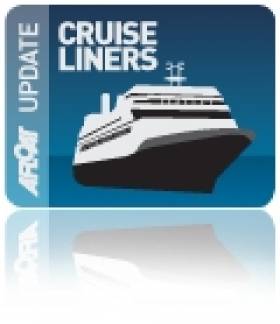Displaying items by tag: MY Air
Superyacht Makes A 'Majestic' Entrance
#SUPERYACHT – The elegant streamlined luxury 60m/200ft motoryacht M.Y. Majestic is to dock in Dublin’s Port this evening, having departed Norway via Scottish waters, writes Jehan Ashmore.
The Caymen Islands registered 12-guest charter-yacht (view gallery) which has a crew of 15 to serve clients normally in the warmer climes of the Caribbean and Mediterranean.
On her visit to Dublin she is to moor midway alongside Sir John Rogersons Quay in the heart of the 'Docklands' quarter.
The motoryacht has a skylounge, which offers private vantage point for bird’s eye views. From here guests have the option to convert the lounge into a cinema with a 100-inch screen and a choice of more than 800 on-demand movie titles.
She was built in 2007 by Feadship, the same Dutch yard that completed the M.Y. Air which called to Cork in May. Majestic has two VIP staterooms, in which the stateroom on the lower deck takes up the full beam (10.9m/34ft) and is approached by its own guest lounge. The other accommodation is for five double en-suite cabins.
As to be expected of the millionaires’ yacht, there is an extensive array of leisure toys on board, be it through the use of two tenders (over 23ft), 3-man wave-runners, hobie kayaks, waterskis, wakeboards, scuba equipment facilities for 8 persons and for those snorkelling up to 12. All this is backed up by a Zodiac rescue boat, however for those not wanting to get their feet wet there’s the gym!
She is powered by a pair of CAT 3516 engines which generate 2000hp (1492kw) each, which deliver a cruising speed of 14knots, though if required this can increased to 16 knots.





























































